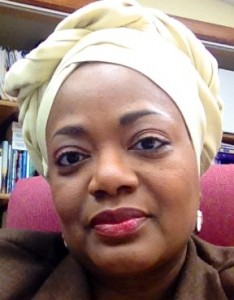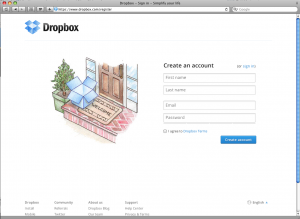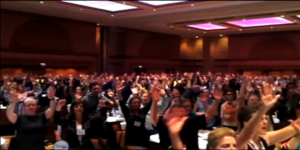February is African American History Month. Sexual violence affects many in the African American community, and people of color can face additional barriers to accessing services; they constitute an under-served population in the violence prevention movement.

photo of Dr. Alice Belcher
For some context, we reached out to WCASA Board Member Dr. Alice Belcher, B.A.| M.S.| D.D., herself a woman of color, with both African and Native American ancestry, and long-time member of the movement to end violence. Dr. Belcher is Commissioner for the Milwaukee Commission on Domestic Violence and Sexual Assault, and a member of the Milwaukee Domestic Violence Homicide Review Commission. She is the founder of the Christian Woman Perspective Ministries, Inc., a volunteer holistic faith-based community outreach program.
Q: How long have you been doing domestic violence and/or sexual assault advocacy and prevention work? What drew you to the movement?
Dr. Belcher:Â I was drawn to the movement to stop domestic violence and sexual assault, several years ago as a victim seeking help to understand what had happened to me. I remain as a survivor, yet trying to understand what happened to me and how it continues to reverberate and impact my life on a daily basis to this day. I try and help other survivors and the community, in occasionally volunteering, or to share my story or to raise awareness about violence, in the hope to prevent violence and the debilitating and disabling health challenges it causes many women (survivors) and even death for some victims.
I am a Mother, who loves her children fiercely! This is important to be understood, in order to understand the impact violence has had upon my life. Prior to the birth of one of my children, while pregnant, my abuse began at the hands of my spouse. I would be choked while pregnant, thrown into walls while pregnant and violated. When I decided to leave, after the birth of our child, I was beaten in our home, bone broken in my face and I was left there for dead. A family member found me. Fear, kept me from allowing the emergency medical personnel at the hospital to contact the police. I would also become a secondary victim of sexual assault. Abusers seek to maintain their power and control over their victims, especially when the victim leaves or threaten to leave. This is also the most dangerous time for the victim and/or her children, if any. The abuser will seek to maintain their power and control over the victim, even if it means through the victimization of their children: by using custody/placement, sexual assault of the children, minimizing the victim’s parental access to her children, or killing the children, particularly in cases where victims have left the abuser through divorce or separation. These tactics of the abuser, represents the “fear†that grips victims to stay. For many women, they stay because they feel they can protect their children better if they stay, rather than have children taken from them in custody or in shared placements.
When I made attempts to report our abuse, it fell on deaf ears and/or I was not believed. I recall being called a liar and my abuser was believed and not me, by the very “systems†that were designed to protect my children and me. I recall being threatened by law enforcement with arrest when I attempted to defend my child and myself against our abuser. I never told anyone again. Why was I not believed or helped by the systems that I sought out? Why was I actually turned away from some domestic violence agencies when I went there for help, which are funded for the very purpose to help women and children like myself? I guess one would have to ask them. I don’t know. But, what I do know is, Christian Woman Perspective Ministries founded, formed, and operated by volunteers, is committed that no women seeking help will ever be turned away without being helped.
Q: Was this the idea/intention behind the formation of Christian Woman Perspective Ministries, Inc?
Dr. Belcher: I am a Christian Woman of Faith, having served the church for 40 years, faithfully; and within that faith am taught that it is the church that the people turn to in having its need met: Food, clothing, sanctuary, settling of disputes, counseling [individual and family.] However, as a survivor of violence and having turned to the church to meet my need, as a suddenly single parent, a victim of violence, there was no support system for me. I have spent several years analyzing why this has been the case for me and for multiple other women-of-faith; while at the same time, I began to pray. I knew if there was no “man [kind]†I could turn to help and support me, I knew I could turn to my faith [God.] Soon, another woman-of-faith joined me in prayer, then another. Soon, there were multiple women meeting in my home for prayer, Bible study and support. What quickly became apparent as we shared our stories during these meetings, almost every woman present and/or their child [ren] was a survivor of domestic violence and/or sexual assault. Christian Woman Perspective Ministries was born out of the necessity of woman-of- faith first seeking support to meet their own need, which was not being met in the church, and has grown into a non-profit community support organization for communities of faith, for families and for community education in violence prevention in Milwaukee County.
Q: What sort of significance does African American History Month have within the violence awareness and prevention movement?
Dr. Belcher: African American History is a very significant piece of the conversation about violence awareness and the prevention movement. In fact, it was the civil rights movement of the 1960s, which ushered in the women’s movement, which ushered in the domestic violence movement.
Most certainly, one must take into account in the conversation about the enslavement of African-Americans in America. Without taking into account America’s history of being a slave holding nation for 400 years, enslaving an entire race of people, its cultures and traditions, social structure and mores, including the stripping away of the African-American people’s humanity in not even to be considered human under our U.S. Constitution [African-Americans were considered only 3/5 human]; and the continued refusal of our nation to accept any responsibility for this conflagration against the African-American people, nor for the continued impact this continues to have upon African-American descendents today; then we can never get “real awareness†or lay foundations necessary for sustainable change or for violence prevention.
Even today, long after the ratification of the 13th Amendment to the U.S. Constitution, freeing African-American people, African-Americans continue the struggle to be free in their own nation of their own birth, just to receive this country’s basic life axiom which is freely given to immigrants entering our country, that being, access to economic power. Access to economic power would bring with it for the African-American people, finally the freedom to deconstruct from the horrors of the African Diaspora and its continued modern day impact as the major contributor of poverty and violence in African-American families and communities.
To quote Dr. Cornel West [who was quoting Ghandi]: “Poverty is the worse form of violence.†Without economic empowerment, there can be no real freedom or sustainable change in ending violence for the African-American culture in this nation.
Q: How does someone’s identity as a person of color impact the way in which they experience violence? What sort of barriers to accessing services might a person from the African American community face?
Dr. Belcher:Â How individuals experience violence, based upon research, information, knowledge and belief, will likely be processed through their individual cultural lens, prefaced by their personal experiences. Which is precisely why cultural competency is of key importance in formulating violence advocacy, prevention and education programming.
For some, African-Americans who have faced barriers in accessing services, cultural competency may have been one of the multi-faceted factors. Others could be limited access to services due to lack of transportation. However, when considering cultural competency as a factor, it is important to understand that cultural competency is not an arrival, but rather, a continuum of “becoming.†Unless, one is directly from within a particular culture (not only race, but also culture), one will always be outside that culture and learning and understanding that culture. Being an outsider, one will always have an unknown about the culture, because that culture will never tell you everything, nor will you ever be brought in completely into the inner circle of that culture and that is OK.
One example of what I call “closed cultures,†could be certain Asian cultures in America. The closed nature of such cultures and how it provides services for its culture in violence prevention and accountability, is readily accepted by outside cultures as being OK; and their cultural process is not questioned by the outside cultures, there is no intrusion upon them by outside cultures, but is respected by outside cultures, and rightfully so. However, by contrast and compare, for the African-American culture, the opposite applies. There is not this acceptance by outside cultures that it is OK for African-American cultures to be a closed culture; or that African-American culture knows what is best in the deliverance of violence prevention or accountability services to its own culture.
One significant barrier for African-Americans is the lack of economic empowerment necessary for the African-American culture to establish and provide for violence prevention services to its culture on a mainstream scale, which has not historically existed. Historically, violence advocacy for African-Americans overwhelmingly has been a system, which has told this culture what it needs, rather than being a culturally competent system, which desired to hear what the culture said it needed and advocated fiercely for it on their behalf or empowered them to provide it for themselves.
There is a rebuttable presumption that a blended programming is sufficient to meet the need for the African-American culture as a part of that grouping, such as people of color or underserved populations. I question the likelihood that an entire race of people, who is feared on some level, whose history and present day status in our nation is so severely negatively impacted by the African-Diaspora, 400 years ancestral slavery in America, continued denial to economic empowerment (land or wealth), can adequately have its multifaceted needs addressed, as simply being a part of programming identified for “people of color†or “underserved populations†along with cultures who are not experiencing these same unique barriers. Based upon my own knowledge and integration into the African-American culture as an African-American, I am of the opinion that It is unlikely that this will provide the necessary access to services needed by African-Americans and could in all likelihood, continue to present as a significant barrier to African-Americans being able to access appropriate services for their needs.
The African-American culture is a wonderfully diverse culture. We are cultures within our own culture, made of blended cultures [I myself descend from slaves and Choctaw Indian.] Still, non-African- American cultures fear the African-American culture. This too, represents a significant barrier to African-Americans being able to receive appropriate services. It also begs the question, how can one positively impact a culture of people, if one has a fear of the people, respect and appreciate them little, have little to no understanding of their history or culture and insists upon not recognizing their own personal bias’ in service to this African-American culture? The answer is, one cannot. When this occurs, a program is not culturally competent; it also runs the risk of possibly being labeled as a program that exists for economic purpose and not for sustainable positive change in the culture. In such cases, cultural competency cannot be achieved as trust is not established and information will be withheld by the culture to the service provider, which can likely result in continued miscommunications and unintended consequences by well-meaning service providers, but continues the re-victimization of African-American victims.
Q: How has the AA community responded to violence? Are there things that community should be doing to better address it?
Dr. Belcher:Â The African-American community response to violence has been in the very best way that it can within the limited resources available directly to our communities. We work with other agencies to attempt to get the needs of our communities met, and with some successes; and most grass roots agencies [most charitable and/or volunteer] continue to serve in the African-American communities to pick up the lack as best they can with no real resources available to them, in service to their communities. Many African-American leaders, community based and faith based, are working very hard to work with individuals and families and educate communities with very limited to no resources. Community meetings are held, one-on-one case mentoring, community education, prayer vigils for the lost and prayers for those who remain. Much more is needed to be done, for the implementation of what we know is needed in African-American communities, but do not have the resources to implement.
Q: What can allies from outside the AA community do to support them in ending violence?
Dr. Belcher: Allies who are outside of the African-American communities can support these communities in ending violence; in first acknowledging their right to exist and that they can support their communities. Acknowledgment and support of the African-American community’s as having the knowledge and understanding as to what is needed to serve its own culture and respect that the same as we do for many other culturally specific domestic violence and/or sexual assault organizations, and support their efforts to do so. Ask them what they need, sincerely and with the expectation to champion their cause and to help bring it to pass for them in service to their community.
During the civil rights movement of the 1960s, the Southern Christian Leadership Conference began the civil rights movement in the south, eventually choosing the Rev. Dr. Martin Luther King, Jr. as its spokesperson. But it was countless others, who were not African-American who joined and also championed the cause of the south which brought about civil rights for African-Americans and the Civil Rights Bill. Many of these individuals like the Rev. Dr. Martin Luther King, Jr., were martyred championing the cause for the African-American civil rights in our nation such as Andrew Goodman, Michael Henry Schwerner, who were young white civil rights workers, who were arrested by a deputy sheriff in the south for helping people to register for the vote and then released into the hands of Klansmen who had plotted their murders. They were shot, and their bodies were buried in an earthen dam.
Ally assistance today, may not require laying down their physical lives like martyrs of the past, for African-Americans seeking equal rights today, but it will be necessary for them to stand-up for African-Americans in the African-American pursuit for equal access to services and the capability to provide violence advocacy, prevention and education and support to their communities. Assist them in obtaining resources necessary to make this happen. Share knowledge of information for grants, funding and partnerships and show them (initially at first), how to write for those grants and how to pursue developing relationships for funding, be inclusive of the African-American organizations in proactively providing them the technical assistance they need so that they may provide services to their specialized culture just as other communities of color are championed in their pursuit in providing specialized culturally responsive services to their communities.
For more information, the Women of Color Network has an excellent fact sheet on Domestic Violence focused on the impact on Communities of Color [PDF download].




